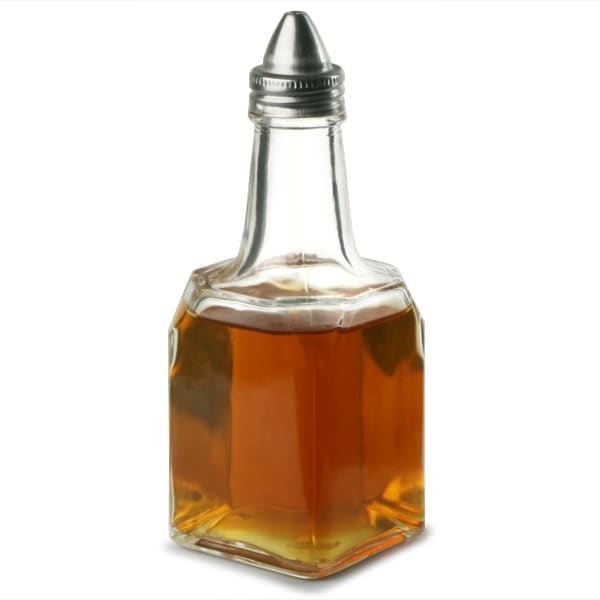I’ve come to believe that the oldest cooking ingredient known to man (besides manna) may just be vinegar. According to The Vinegar Institute (yes, there is a vinegar institute: Check it out at versitilevinegar.org), the use of vinegar can be traced back more than 10,000 years. In fact, flavored vinegars have around almost as long so the wide variety of vinegars available in the market place today just new and improved packaging on a pantry staple.
It is supposed that, once upon a time, an enterprising vintner who had a cask of slightly sour wine decided to try and use it for cooking instead of drinking. The French said it best when they named it vin (wine) aigre (sour). Lest you think that all vinegars are derived just from grapes, listen up. For lo these many centuries people have also been making vinegar from a variety of foods that ferment. Simply put, vinegar is the byproduct that is created when there is an oxidation of the ethanol in an alcoholic liquid like wine, mead, fermented fruit juice and even beer.
Of course vinegar is so much more than whipping up a bad batch of wine. It has become a process not unlike that of creating fine wines and some even support a hefty price tag. Some of the true balsamic vinegars made from the white Trebbiano grape in Italy can be aged for more than 20 year and can run more than $100 a bottle. In addition to balsamic, there is apple cider vinegar, red wine vinegar, rice wine and even coconut vinegar to choose from. One of the best things about vinegar is that it enhances almost any food you pair it with or add to it. Enterprising chefs use fruits, honey, garlic or even herbs to vinegar to help enhance the flavors specialty dishes.
The breakdowns of the types of vinegars that are most available to the average consumer are:
- Wine Vinegar can be made from white, red and or a rose wine. These vinegars are great in salad dressings and marinades.
- Rice Vinegar is made from fermented rice and rice wine vinegar is made from sake. Rice vinegar made from sake is often called seasoned rice vinegar and has a stronger taste than rice vinegar.
- Cider Vinegar is made from apples and is found primarily in the United States.
- Distilled Vinegar is made from grains and is best when you use it for pickling and cleaning.
- Malt Vinegar is very popular in England. It’s made from fermented barley and grain mash, and fermented in casket of beech or birch. It’s often served as a condiment to fish and chips much like we use ketchup.
But wait (as they say on TV, there’s more): Vinegar is also a terrific household cleaner. Using distilled white vinegar with water, with baking soda or soap as a cleaner, is a really inexpensive way to go green and still have a sparkling clean home. Vinegar can be used to clean the bathroom, kitchen and even help make your laundry whiter. It has both antiseptic and antibiotic properties, so it is also considered an effective disinfectant.
Before you rush out and purchase every kind of vinegar you can find, try thinking about the type of cooking you like to do then buy one or two, a little goes a LONG way, to try out. The recipes below will give you just a taste of what a so-so dish can transform into with the right kind of oomph that only vinegar can add.
NOTE: Make sure that the vinegar (especially the wine vinegars) you purchase has a reliable kosher certification.
The words of this author reflect his/her own opinions and do not necessarily represent the official position of the Orthodox Union.

